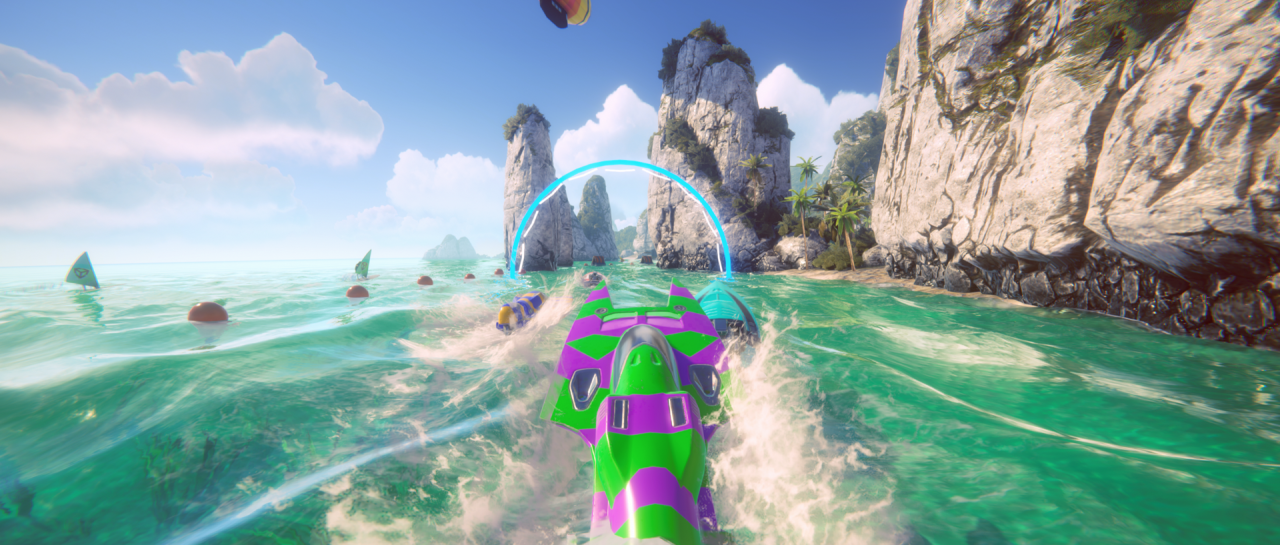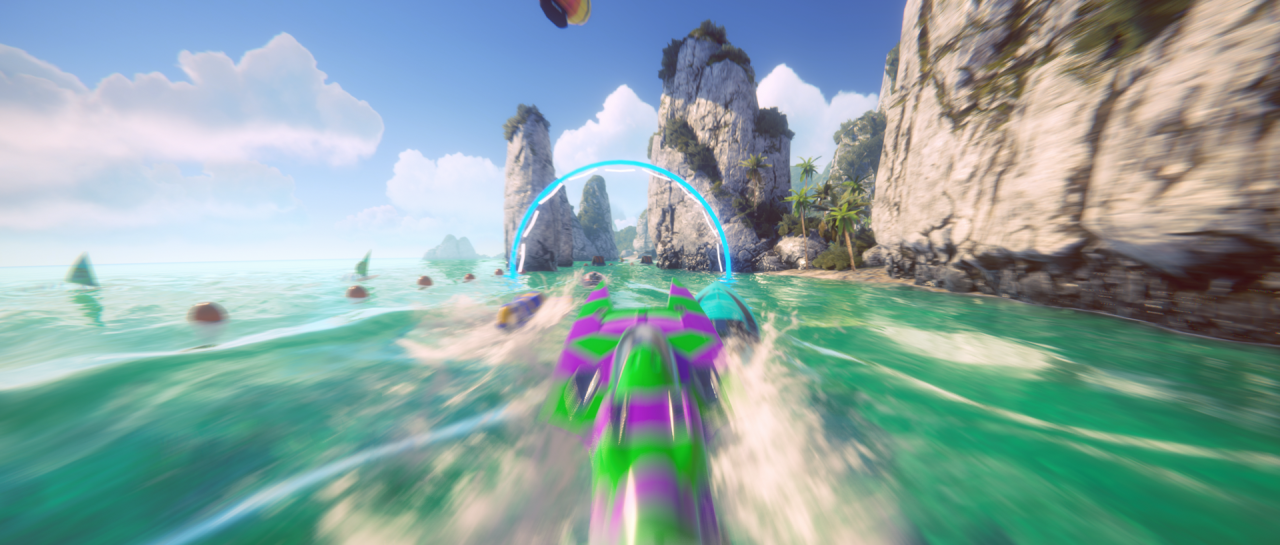Motion Blur

Scene with Motion Blur effect turned off.

Scene with Motion Blur effect turned on.
The Motion Blur effect simulates the blur that occurs in an image when a real-world camera films objects moving faster than the camera’s exposure time. This is usually due to rapidly moving objects, or a long exposure time.
Universal Render Pipeline (URP) only blurs camera motions.
Using Motion Blur
Motion Blur uses the Volume system, so to enable and modify Motion Blur properties, you must add a Motion Blur override to a Volume in your scene. To add Motion Blur to a Volume:
- In the Scene or Hierarchy view, select a GameObject that contains a Volume component to view it in the Inspector.
- In the Inspector, navigate to Add Override > Post-processing, and click on Motion Blur. URP now applies Motion Blur to any Camera this Volume affects.
Properties
| Property | Description |
|---|---|
| Mode | Select the motion blur technique. Options:
|
| Quality | Set the quality of the effect. Lower presets give better performance, but at a lower visual quality. |
| Intensity | Set the strength of the motion blur filter to a value from 0 to 1. Higher values give a stronger blur effect, but can cause lower performance, depending on the Clamp parameter. |
| Clamp | Set the maximum length that the velocity resulting from Camera rotation can have. This limits the blur at high velocity, to avoid excessive performance costs. The value is measured as a fraction of the screen's full resolution. The value range is 0 to 0.2. The default value is 0.05. |
Troubleshooting performance issues
To decrease the performance impact of Motion Blur, you can:
- Reduce the Quality. A lower quality setting gives higher performance but may exhibit more visual artifacts.
- Change the Mode property from Camera and Objects to Camera Only. This technique has better performance than Camera and Objects.
- Decrease the Clamp to reduce the maximum velocity that Unity takes into account. Lower values give higher performance.